
Architectural products company Apogee (NASDAQ: APOG) beat Wall Street’s revenue expectations in Q3 CY2025, with sales up 4.6% year on year to $358.2 million. Its non-GAAP profit of $0.98 per share was 16.2% above analysts’ consensus estimates.
Is now the time to buy Apogee? Find out by accessing our full research report, it’s free for active Edge members.
Apogee (APOG) Q3 CY2025 Highlights:
- Revenue: $358.2 million vs analyst estimates of $350.9 million (4.6% year-on-year growth, 2.1% beat)
- Adjusted EPS: $0.98 vs analyst estimates of $0.84 (16.2% beat)
- Adjusted EBITDA: $48.71 million vs analyst estimates of $36.73 million (13.6% margin, 32.6% beat)
- Operating Margin: 7.5%, down from 12.6% in the same quarter last year
- Free Cash Flow Margin: 14.6%, similar to the same quarter last year
- Market Capitalization: $932.7 million
Company Overview
Involved in the design of the Apple Store on Fifth Avenue in New York City, Apogee (NASDAQ: APOG) sells architectural products and services such as high-performance glass for commercial buildings.
Revenue Growth
A company’s long-term sales performance can indicate its overall quality. Any business can have short-term success, but a top-tier one grows for years. Regrettably, Apogee’s sales grew at a sluggish 1.6% compounded annual growth rate over the last five years. This fell short of our benchmarks and is a tough starting point for our analysis.
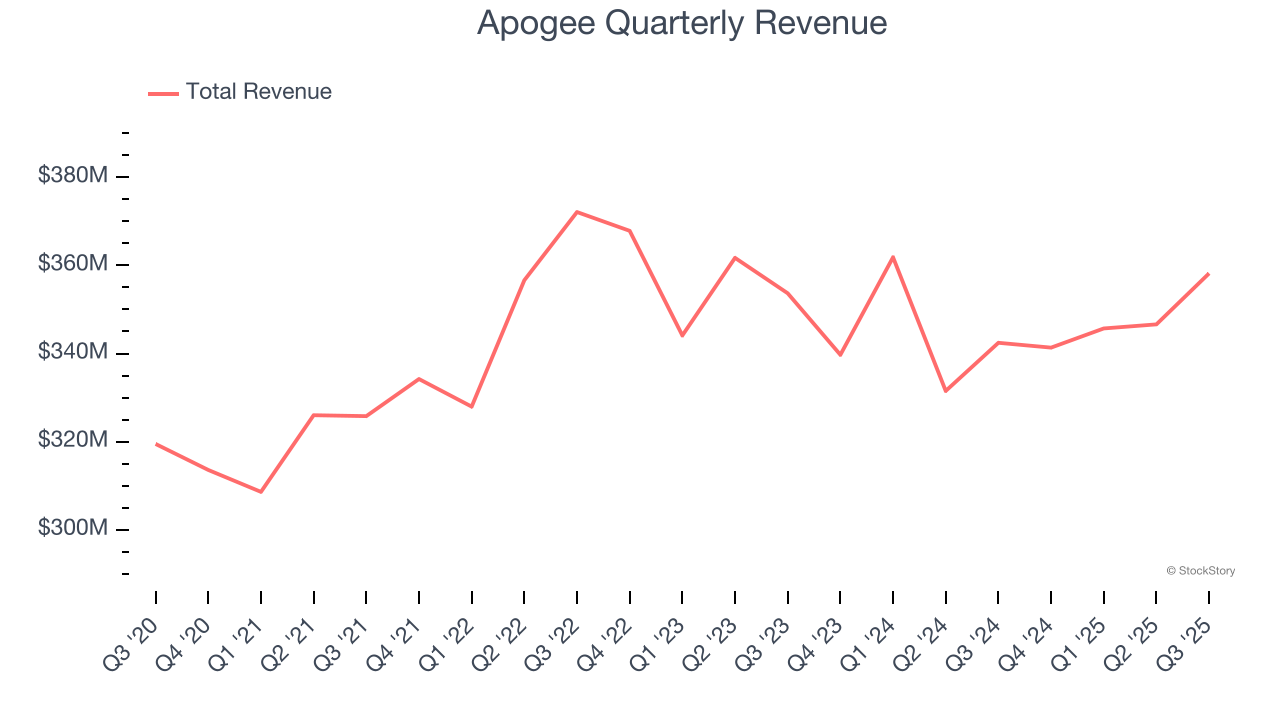
We at StockStory place the most emphasis on long-term growth, but within industrials, a half-decade historical view may miss cycles, industry trends, or a company capitalizing on catalysts such as a new contract win or a successful product line. Apogee’s performance shows it grew in the past but relinquished its gains over the last two years, as its revenue fell by 1.3% annually. 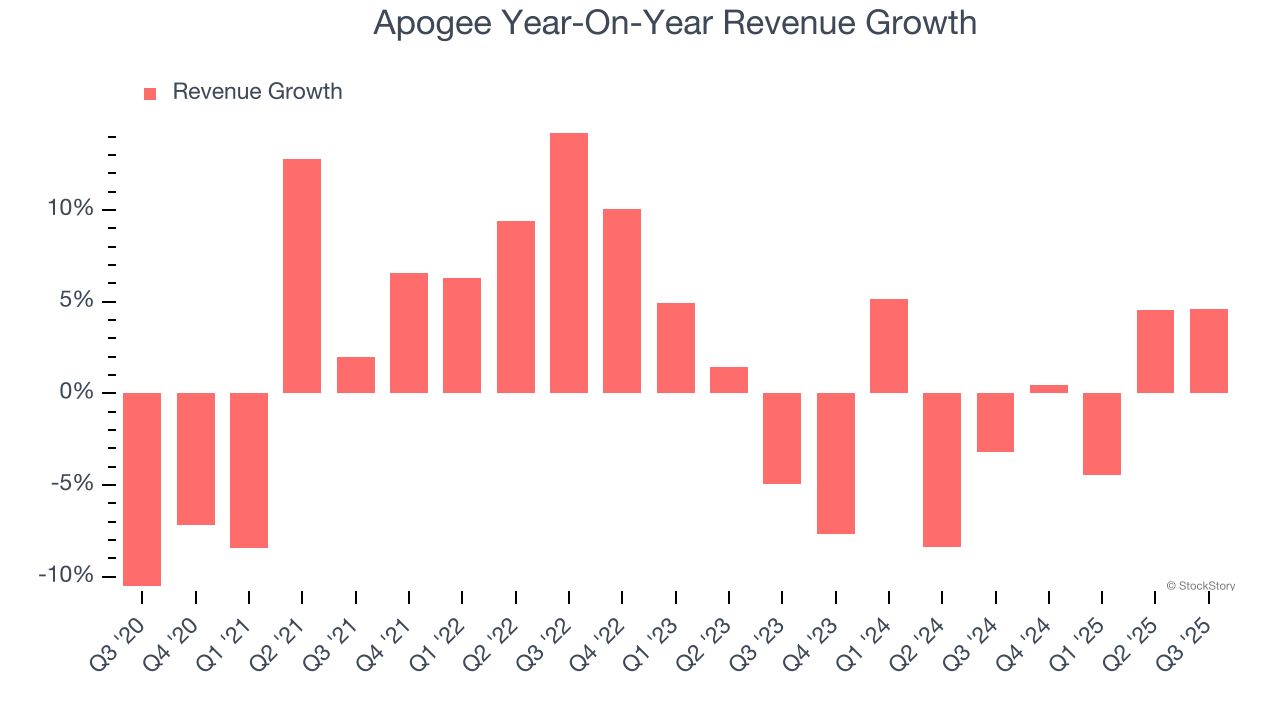
This quarter, Apogee reported modest year-on-year revenue growth of 4.6% but beat Wall Street’s estimates by 2.1%.
Looking ahead, sell-side analysts expect revenue to grow 3% over the next 12 months. Although this projection implies its newer products and services will fuel better top-line performance, it is still below average for the sector.
Today’s young investors won’t have read the timeless lessons in Gorilla Game: Picking Winners In High Technology because it was written more than 20 years ago when Microsoft and Apple were first establishing their supremacy. But if we apply the same principles, then enterprise software stocks leveraging their own generative AI capabilities may well be the Gorillas of the future. So, in that spirit, we are excited to present our Special Free Report on a profitable, fast-growing enterprise software stock that is already riding the automation wave and looking to catch the generative AI next.
Operating Margin
Operating margin is one of the best measures of profitability because it tells us how much money a company takes home after procuring and manufacturing its products, marketing and selling those products, and most importantly, keeping them relevant through research and development.
Apogee has done a decent job managing its cost base over the last five years. The company has produced an average operating margin of 8.8%, higher than the broader industrials sector.
Looking at the trend in its profitability, Apogee’s operating margin rose by 1.3 percentage points over the last five years, as its sales growth gave it operating leverage.
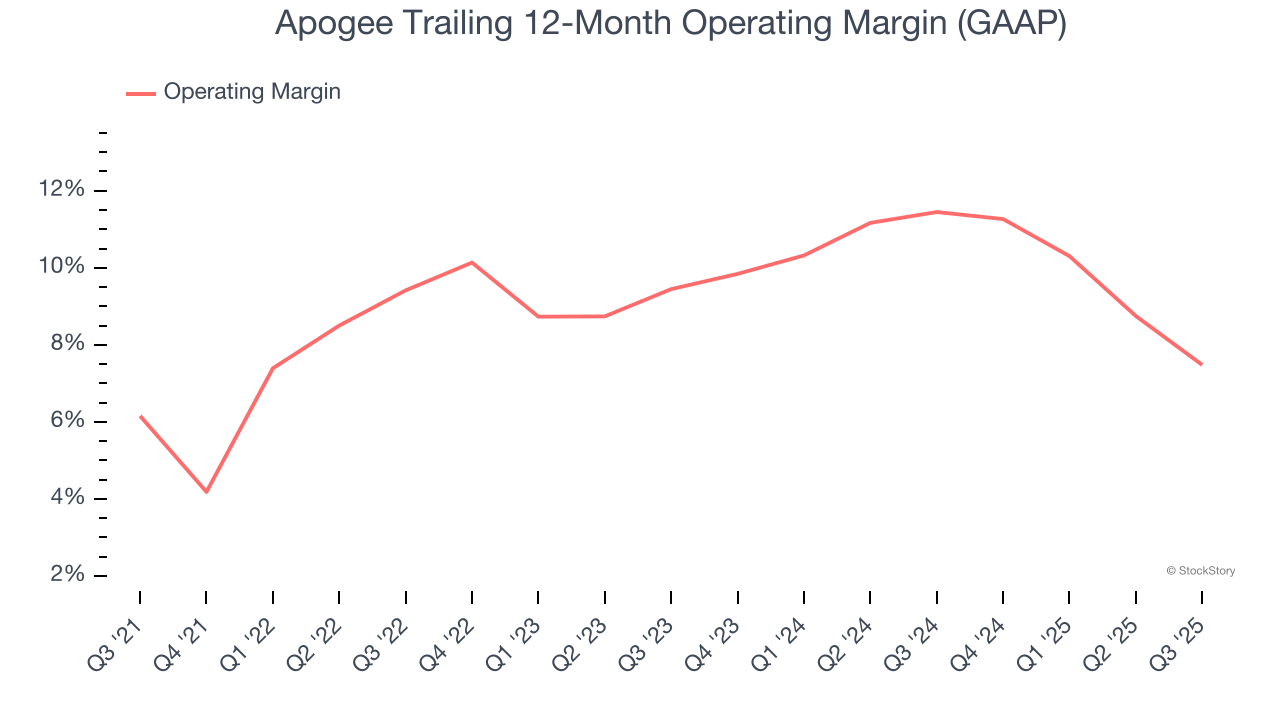
This quarter, Apogee generated an operating margin profit margin of 7.5%, down 5.1 percentage points year on year. Since Apogee’s gross margin decreased more than its operating margin, we can assume its recent inefficiencies were driven more by weaker leverage on its cost of sales rather than increased marketing, R&D, and administrative overhead expenses.
Earnings Per Share
Revenue trends explain a company’s historical growth, but the long-term change in earnings per share (EPS) points to the profitability of that growth – for example, a company could inflate its sales through excessive spending on advertising and promotions.
Apogee’s EPS grew at a remarkable 13.1% compounded annual growth rate over the last five years, higher than its 1.6% annualized revenue growth. This tells us the company became more profitable on a per-share basis as it expanded.
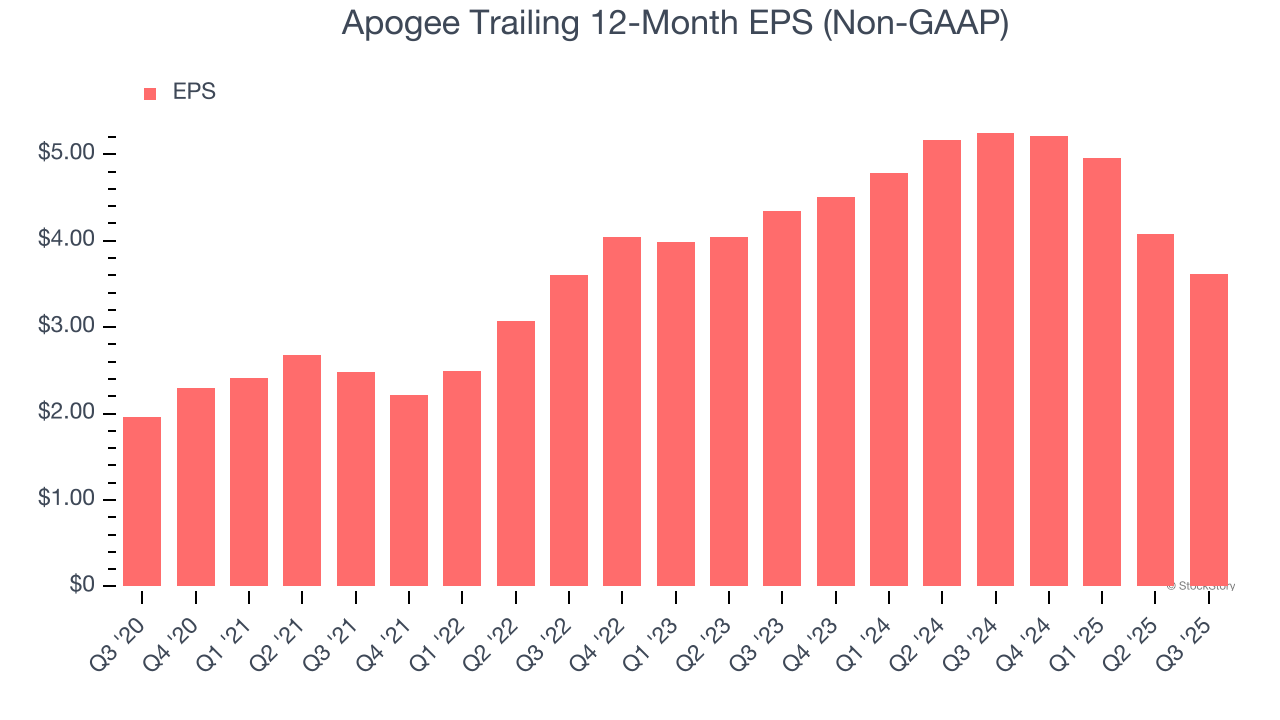
Diving into the nuances of Apogee’s earnings can give us a better understanding of its performance. As we mentioned earlier, Apogee’s operating margin declined this quarter but expanded by 1.3 percentage points over the last five years. Its share count also shrank by 18.6%, and these factors together are positive signs for shareholders because improving profitability and share buybacks turbocharge EPS growth relative to revenue growth. 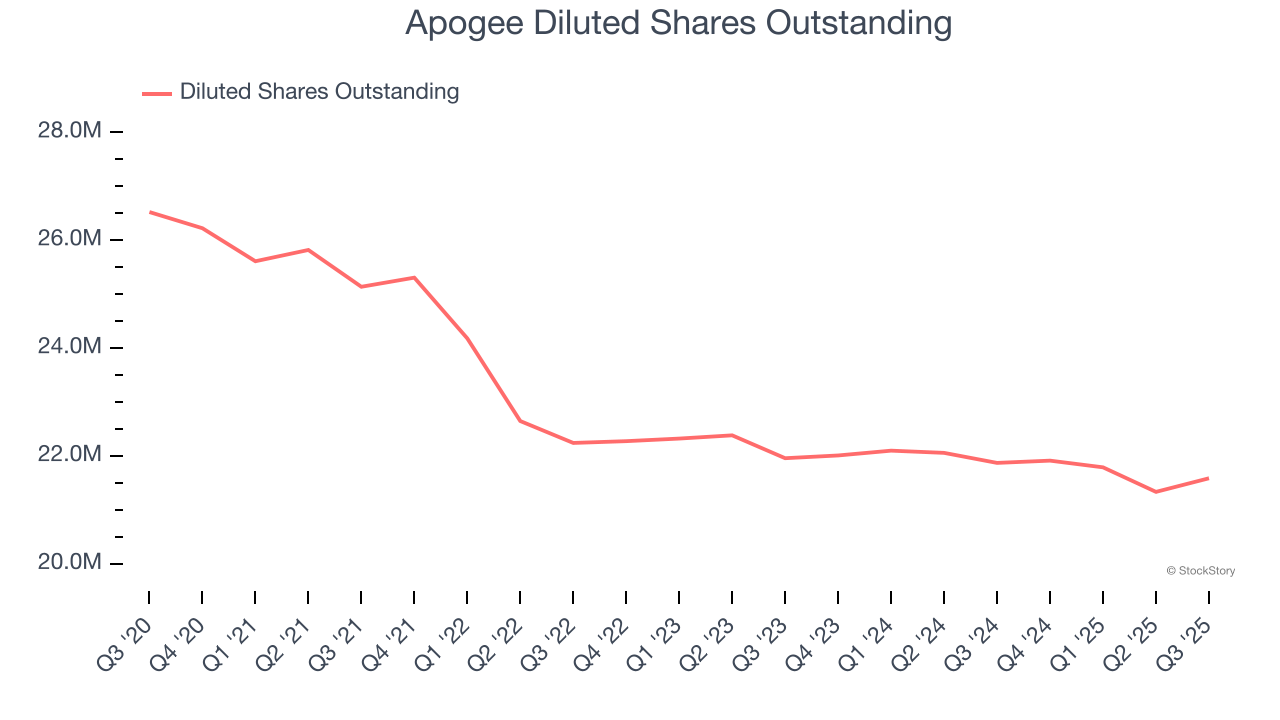
Like with revenue, we analyze EPS over a shorter period to see if we are missing a change in the business.
For Apogee, its two-year annual EPS declines of 8.7% mark a reversal from its (seemingly) healthy five-year trend. We hope Apogee can return to earnings growth in the future.
In Q3, Apogee reported adjusted EPS of $0.98, down from $1.44 in the same quarter last year. Despite falling year on year, this print easily cleared analysts’ estimates. Over the next 12 months, Wall Street expects Apogee’s full-year EPS of $3.62 to grow 23.6%.
Key Takeaways from Apogee’s Q3 Results
We were impressed by how significantly Apogee blew past analysts’ EBITDA expectations this quarter. We were also glad its EPS outperformed Wall Street’s estimates. Zooming out, we think this quarter featured some important positives. The stock traded up 7.1% to $44.40 immediately after reporting.
Apogee put up rock-solid earnings, but one quarter doesn’t necessarily make the stock a buy. Let’s see if this is a good investment. What happened in the latest quarter matters, but not as much as longer-term business quality and valuation, when deciding whether to invest in this stock. We cover that in our actionable full research report which you can read here, it’s free for active Edge members.






